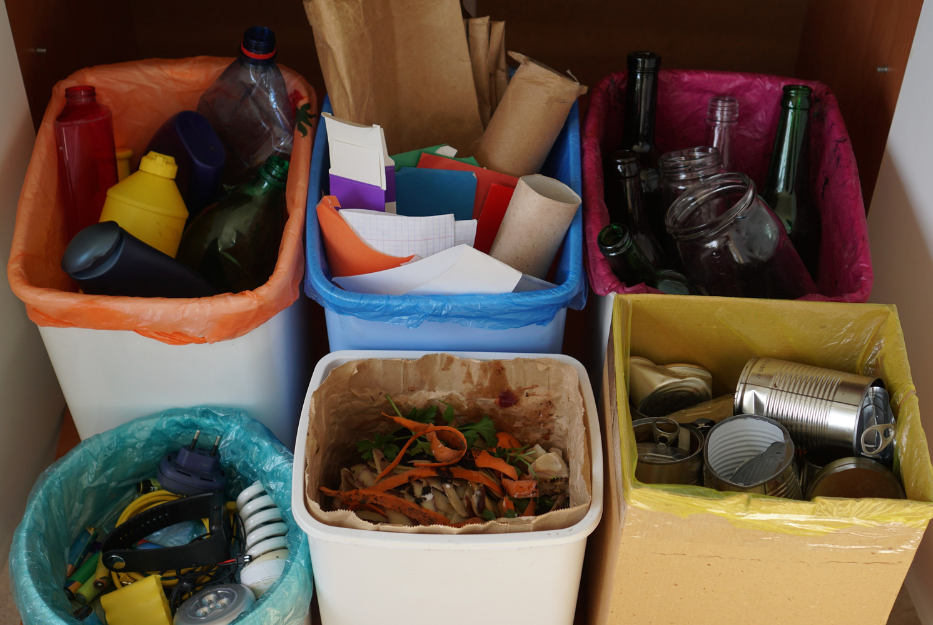How to Reduce Household Waste and Recycle in Canada (step-by-step-guide)

**Please review the disclaimer at the end of this document before reading or using this guide.
As a new immigrant in Canada, understanding how to manage household waste and participate in recycling programs is an important step in adopting sustainable living practices. Canada has a strong focus on waste reduction and recycling, with programs that vary by province and municipality. This guide provides information on how new immigrants can reduce household waste and recycle effectively in Canada.
Step 1: Understand the Basics of Waste Reduction
- Reduce:
- Minimize Packaging: Choose products with minimal or no packaging. Opt for bulk items or products packaged in recyclable materials.
- Avoid Single-Use Plastics: Reduce the use of disposable items like plastic bags, straws, and cutlery. Bring your own reusable bags, containers, and utensils when shopping or dining out.
- Buy Only What You Need: Plan meals and shopping trips to avoid overbuying and reduce food waste. Make a shopping list and stick to it.
- Reuse:
- Repurpose Items: Before throwing something away, consider if it can be repurposed or reused. For example, glass jars can be used for storage, and old clothes can be turned into cleaning rags.
- Donate or Sell: Donate items you no longer need, such as clothing, furniture, and electronics, to local charities or sell them online through platforms like Kijiji or Facebook Marketplace.
- Recycle:
- Know What to Recycle: Familiarize yourself with your local recycling program’s guidelines, which can vary by city or province. Commonly recyclable items include paper, cardboard, glass bottles, aluminum cans, and certain plastics.
- Compost:
- Start Composting: Composting organic waste like fruit and vegetable scraps, coffee grounds, and yard waste can significantly reduce the amount of waste sent to landfills. Some municipalities offer curbside compost collection, while others may have community composting programs.
Step 2: Learn About Recycling Programs in Canada
- Municipal Recycling Programs:
- Recycling programs are managed by local municipalities, so it’s important to learn the specifics of the program in your area. Visit your city or town’s website for detailed information on what can and cannot be recycled.
- Most municipalities provide curbside recycling collection for residential areas. Check your local schedule for collection days.
- Blue Box Program:
- The Blue Box program is widely used in Canada for curbside recycling. Residents place recyclable materials like paper, cardboard, and certain plastics in a blue bin for collection.
- Items that can usually be recycled in the Blue Box include:
- Paper and cardboard
- Glass bottles and jars
- Aluminum and steel cans
- Plastics with specific recycling symbols (usually #1, #2, #4, #5)
- Items that typically should not be placed in the Blue Box include plastic bags, styrofoam, and electronics.
- Bottle Return Programs:
- Many provinces, such as British Columbia, Alberta, and Ontario, have bottle return programs where you can return beverage containers for a refund. These programs encourage the recycling of bottles and cans, reducing litter and waste.
- Special Recycling Programs:
- Some items, such as electronics, batteries, and hazardous materials, require special disposal. Look for e-waste recycling events or drop-off locations in your area.
- Programs like Recycle My Electronics and Call2Recycle offer convenient ways to recycle old electronics and batteries.
- Textile Recycling:
- Some municipalities and organizations offer textile recycling programs for old clothing, linens, and fabrics. Donated textiles can be repurposed, reused, or recycled.
Step 3: Reduce Food Waste
- Plan Your Meals:
- Plan meals for the week and make a shopping list to avoid buying more food than you need. This helps reduce food waste and saves money.
- Consider batch cooking and freezing portions to use later.
- Store Food Properly:
- Store food correctly to extend its shelf life. Use airtight containers for dry goods and properly wrap fruits and vegetables to keep them fresh.
- Learn how to properly store leftovers and label them with dates to ensure they’re eaten in time.
- Understand Expiration Dates:
- Familiarize yourself with the difference between “best before” dates and expiration dates. “Best before” dates indicate peak quality, while expiration dates indicate when a product should no longer be consumed.
- Composting:
- Set up a compost bin in your kitchen for food scraps. Many municipalities provide compost bins and offer curbside collection for organic waste.
- If your area doesn’t have curbside composting, consider starting a backyard compost pile or using a countertop compost bin with a carbon filter to minimize odors.
Step 4: Participate in Community Waste Reduction Initiatives
- Community Clean-Up Events:
- Join or organize community clean-up events to help reduce litter in your neighborhood. These events are often coordinated by local environmental groups or municipalities.
- Reuse Centers and Thrift Stores:
- Support or donate to local reuse centers and thrift stores, which help divert usable items from landfills and provide affordable goods to the community.
- Educational Workshops:
- Attend workshops or seminars on waste reduction, recycling, and composting offered by local environmental organizations or community centers. These events provide valuable tips and resources.
- Zero Waste Stores:
- Explore zero waste stores that offer package-free shopping options. Bring your own containers to fill up on bulk foods, cleaning supplies, and personal care products.
Step 5: Educate Yourself and Others
- Stay Informed:
- Keep up to date with changes to local recycling programs, waste reduction initiatives, and environmental policies by following your municipality’s website and social media channels.
- Teach Your Family:
- Educate your family members, especially children, about the importance of recycling and waste reduction. Make it a fun and rewarding activity for everyone.
- Advocate for Sustainable Practices:
- Encourage your workplace, school, or community to adopt sustainable practices such as reducing single-use plastics, composting, and organizing recycling drives.
- Use Online Resources:
- Explore online resources, blogs, and forums dedicated to waste reduction and recycling. Websites like Recycle Coach offer tools to help you understand local recycling rules and reduce waste.
Additional Tips for New Immigrants
- Cultural Awareness:
- Waste reduction practices may differ from those in your home country. Be open to learning and adapting to local practices.
- Language Support:
- If English or French is not your first language, look for recycling and waste reduction materials in your preferred language. Many municipalities offer multilingual resources.
- Eco-Friendly Shopping:
- Choose products with eco-friendly packaging and support brands that prioritize sustainability. Look for certifications like Fair Trade, organic, and recycled content.
- Support Local Recycling Programs:
- Participate in local recycling programs by following guidelines and ensuring your recyclables are clean and sorted correctly.
Reducing household waste and recycling effectively are important steps toward living sustainably in Canada. By understanding local recycling programs, reducing food waste, participating in community initiatives, and educating yourself and others, you can contribute to a cleaner, greener environment. As a new immigrant, embracing these practices will help you integrate into your community and support Canada’s commitment to environmental stewardship. Welcome to Canada, and thank you for doing your part to protect the planet!
**DISCLAIMER: This document was prepared based on information gathered from various online sources. While our aim is to provide accurate and helpful information to newcomers in Canada, Active Action cannot be held responsible for any actions, outcomes, or situations that may arise from the use of this document. We strongly recommend that you verify any details with official sources or relevant authorities if you have any doubts or uncertainties about any information provided in this document. If you have any specific questions about the information in this document, or if you notice any inaccuracies or missing information, please inform us immediately through the contact form. We will respond to you as soon as possible and/or update the information as necessary.


